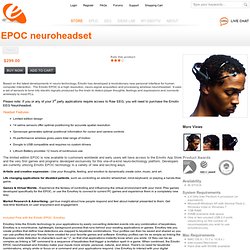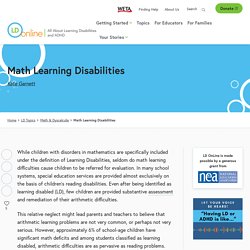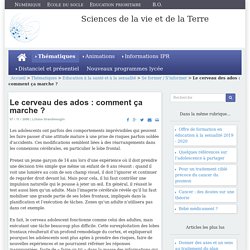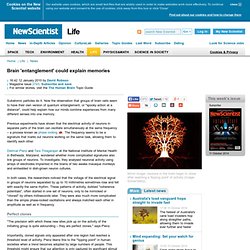

Etymology of Neuroscience Terms. High Resolution EEG. Artistic and creative expression - Use your thoughts, feeling, and emotion to dynamically create color, music, and art.

Life changing applications for disabled patients, such as controlling an electric wheelchair, mind-keyboard, or playing a hands-free game. Games & Virtual Worlds - Experience the fantasy of controlling and influencing the virtual environment with your mind. Play games developed specifically for the EPOC, or use the EmoKey to connect to current PC games and experience them in a completely new way. Market Research & Advertising - get true insight about how people respond and feel about material presented to them. Get real-time feedback on user enjoyment and engagement. Included Free with the Emotiv EPOC: EmoKey EmoKey links the Emotiv technology to your applications by easily converting detected events into any combination of keystrokes.
Math Learning Disabilities. By: Kate Garnett While children with disorders in mathematics are specifically included under the definition of Learning Disabilities, seldom do math learning difficulties cause children to be referred for evaluation.

In many school systems, special education services are provided almost exclusively on the basis of children's reading disabilities. Even after being identified as learning disabled (LD), few children are provided substantive assessment and remediation of their arithmetic difficulties. This relative neglect might lead parents and teachers to believe that arithmetic learning problems are not very common, or perhaps not very serious. However, approximately 6% of school-age children have significant math deficits and among students classified as learning disabled, arithmetic difficulties are as pervasive as reading problems. Evidence from learning disabled adults belies the social myth that it is okay to be rotten at math. Le cerveau des ados : comment ça marche ? Les adolescents ont parfois des comportements imprévisibles qui peuvent les faire passer d’une attitude mature à une prise de risques parfois soldée d’accidents.

Ces modifications semblent liées à des réarrangements dans les connexions cérébrales, en particulier le lobe frontal. Prenez un jeune garçon de 14 ans lors d’une expérience où il doit prendre une décision très simple que même un enfant de 8 ans réussit : quand il voit une lumière au coin de son champ visuel, il doit l’ignorer et continuer de regarder droit devant lui. Mais pour cela, il lui faut contrôler une impulsion naturelle qui le pousse à jeter un œil. En général, il réussit le test aussi bien qu’un adulte. Mais l’imagerie cérébrale révèle qu’il lui faut mobiliser une grande partie de ses lobes frontaux, impliqués dans la planification et l’exécution de tâches. En fait, le cerveau adolescent fonctionne comme celui des adultes, mais exécutant une tâche beaucoup plus difficile.
Brain 'entanglement' could explain memories - life - 12 January 2010. Subatomic particles do it.

Now the observation that groups of brain cells seem to have their own version of quantum entanglement, or "spooky action at a distance", could help explain how our minds combine experiences from many different senses into one memory. Previous experiments have shown that the electrical activity of neurons in separate parts of the brain can oscillate simultaneously at the same frequency – a process known as phase locking . The frequency seems to be a signature that marks out neurons working on the same task, allowing them to identify each other. Dietmar Plenz and Tara Thiagarajan at the National Institute of Mental Health in Bethesda, Maryland, wondered whether more complicated signatures also link groups of neurons.
In both cases, the researchers noticed that the voltage of the electrical signal in groups of neurons separated by up to 10 millimetres sometimes rose and fell with exactly the same rhythm. Perfect clones New Scientist Not just a website!